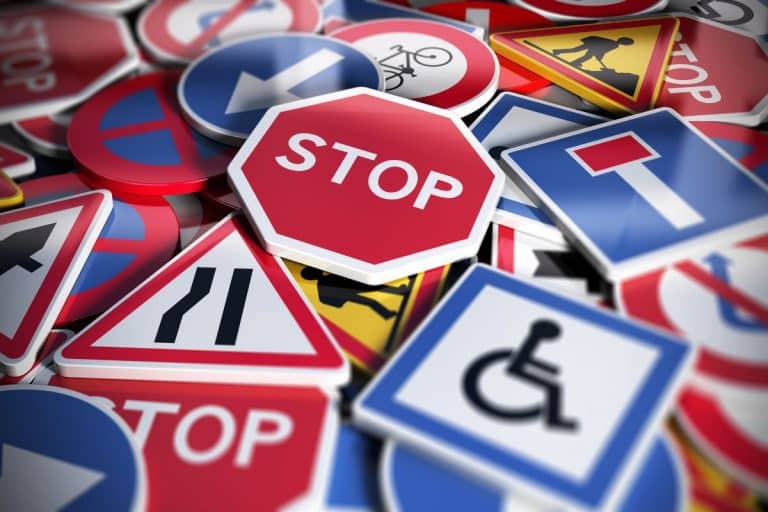
Even though you have a driver’s license and know the general rules of the road in California, there are still a number of different driving laws that are designed to protect you and other drivers, as well as direct and maintain a sensible flow of traffic.
California’s various driving laws are codified in the California Vehicle Code. These statutes form the basis for what is and is not legal when you’re behind the wheel of a car. Passing your driver’s test and renewing your license gives you the privilege of driving, but you may be wondering just how comprehensive your knowledge is of these laws. Here is a quick quiz regarding California’s driving laws to test your knowledge.
Experience and Knowledge From California Car Accident Lawyers
Knowing the law is one thing, but understanding how it applies to your specific situation is another. When you find yourself in a car accident, our team of experienced and knowledgeable California car accident lawyers at Maison Law can help you. We can explain your legal options and just how California’s driving laws apply to your particular situation. We strive to give every client a tailored approach to their case, so if you’ve been in a car accident or would like to know more about your legal options, don’t hesitate to contact us for a free consultation.
A. 50 feet before the turn
B. 100 feet before the turn
C. You don’t have to signal if no one is behind you
D. Soon enough to give drivers behind you time to react
It’s always a good idea to give drivers behind you plenty of warning before making a turn, but according to the law in California, you must signal at least 100 feet before you turn.
A. 60 miles per hour
B. 65 miles per hour
C. 55 miles per hour
D. 70 miles per hour
While different localities and roadways have their own speed limits, when driving on one of California’s two-lane roads with yellow lines, the speed limit is 55 MPH, unless otherwise posted.
A. Yield to the vehicle that arrives first.
B. Treat the intersection like it is a roundabout.
C. Yield to the vehicle on your left if it reaches the intersection at the same time as you.
D. Treat the intersection as if there is a stoplight.
When you’re stopped at an intersection without a stop or yield sign, the general law says that you must yield to the vehicle, bicycle, or any other vehicle that arrives first.
A. Sell or transfer your vehicle.
B. Your car fails a state inspection.
C. Get a new prescription for glasses or contacts.
D. Get in a vehicle accident.
After selling or transferring ownership of an old vehicle to another person or business, you must notify the DMV within five days of the transaction. This allows them to issue a new title and license plate.
A. In an unmarked crosswalk
B. In a bicycle lane.
C. Within 100 feet of a school.
D. Within three feet of a private driveway
No driver of any vehicle is allowed to park in an unmarked crosswalk in California. Doing so is not only dangerous to pedestrians or anyone else trying to cross the street, but other drivers as well.
A. Enter the intersection and wait until traffic clears.
B. Stay out of the intersection until traffic clears.
C. Merge into another lane to get around the traffic.
D. Drive through the green light.
Just because you have a green light doesn’t always mean you’re free to move forward. If traffic is blocking the intersection, you should wait until it clears so you don’t cause an accident.
A. The lines may be crossed to enter or exit a driveway.
B. It allows for a legal U-Turn.
C. You can pass a slow-moving vehicle.
D. May not be crossed for any reason.
Solid double yellow lines on a road are not to be crossed for any reason. Doing so will not only potentially cause an accident, but it will immediately get you pulled over if a police officer sees it.
A. Leave a note on the vehicle.
B. Report the accident immediately to the local police or California Highway Patrol.
C. Stay at the scene of the accident.
D. All of the above.
California law requires you or any other driver involved in an accident to remain at the scene until their information can be exchanged. Failure to do so may constitute a hit-and-run charge.
A. Listening to music through headphones that cover both ears.
B. Adjusting your outside mirrors.
C. Eating or drinking.
D. Transporting an unrestrained animal inside the vehicle.
While all of the above actions are dangerous, wearing headphones that cover both ears is against the law. You should always try to be alert while driving, instead of being distracted.
A. Loading zone for freight or passengers.
B. Loading zone for passengers or mail only.
C. Loading zone for freight only.
D. Do not park.
When you see a curb that’s painted white in California, it denotes that you can park at that spot for only the amount of time it takes to load passengers or mail.
A. Tanker trucks marked with hazardous materials placards.
B. Pickup trucks towing a trailer.
C. Mail trucks.
D. Any vehicle with three or more axles.
It’s always a good idea to pause before crossing railroad tracks. However, only tanker trucks that are carrying hazardous materials are legally required to stop before crossing railroad tracks.
Contact Maison Law Today For a Free Consultation
No matter what questions you may have about California driving laws, Maison Law can help. Our team of experienced California car accident lawyers understands how these laws work and can explain your options to you if you find yourself in a car accident. To schedule a free consultation with our team, contact us today.

